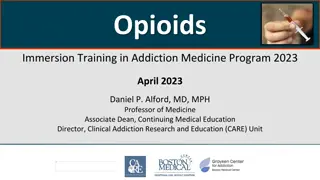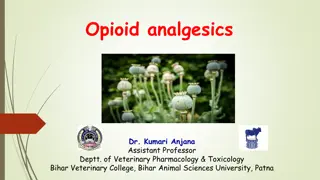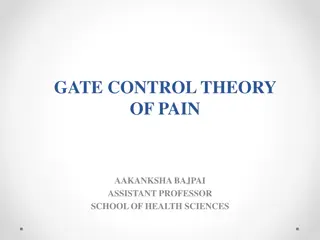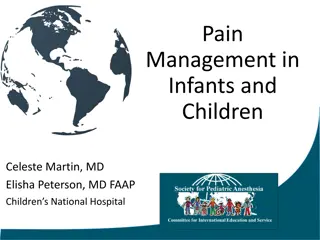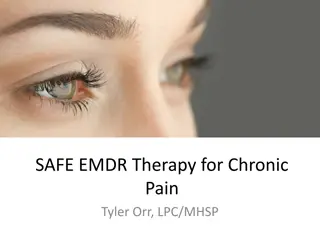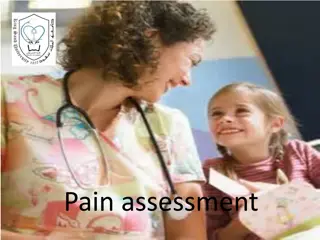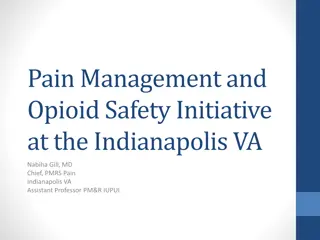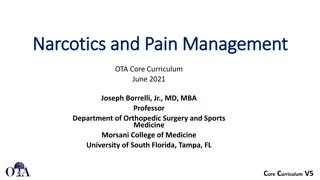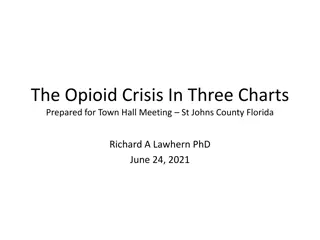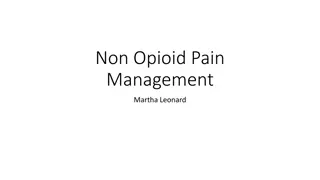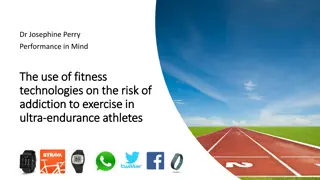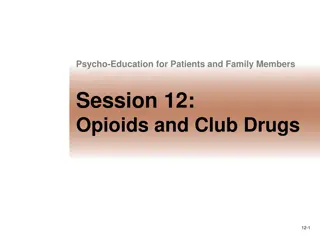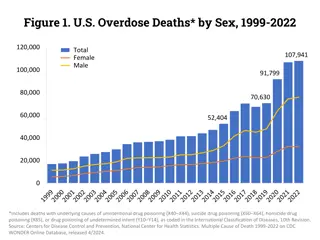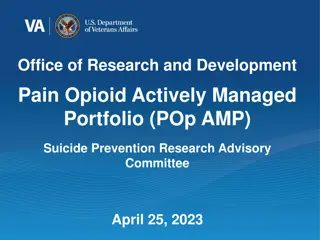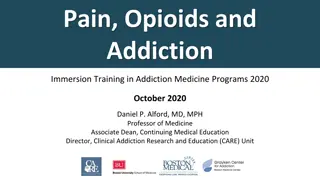Insights on Pain, Opioids, and Addiction in Clinical Practice
Understanding the complexities of pain management, opioid use, and addiction from both patient and clinician perspectives. Unveiling challenges faced in trust, honesty, and care within the healthcare setting. A deep dive into the impact of chronic pain on individuals and society, shedding light on the critical need for compassionate and evidence-based care.
Download Presentation

Please find below an Image/Link to download the presentation.
The content on the website is provided AS IS for your information and personal use only. It may not be sold, licensed, or shared on other websites without obtaining consent from the author.If you encounter any issues during the download, it is possible that the publisher has removed the file from their server.
You are allowed to download the files provided on this website for personal or commercial use, subject to the condition that they are used lawfully. All files are the property of their respective owners.
The content on the website is provided AS IS for your information and personal use only. It may not be sold, licensed, or shared on other websites without obtaining consent from the author.
E N D
Presentation Transcript
Pain, Opioids and Addiction Immersion Training in Addiction Medicine Programs 2023 April 2023 Daniel P. Alford, MD, MPH Professor of Medicine Associate Dean, Continuing Medical Education Director, Clinical Addiction Research and Education (CARE) Unit
State of Pain Acute pain is an adaptive symptom that is life preserving Chronic pain is Painting by Gull G maladaptive and may present as a disease in and of itself common (21% of US adults [~50 million] reported pain on most days or everyday) subjective to the patient and the clinician associated higher fatal and nonfatal suicide attempts Pain contributes to disparities by disproportionally impacting females, elderly, and those with lower socioeconomic backgrounds Yong R et al. Pain 2022 Dahlammer J et al. MMWR Morb Mortal Wkly Rep 2018 Institute of Medicine. 2011 Relieving Pain in America. Washington DC
Qualitative study of adults with low back pain living in an urban setting in British Columbia, Canada Semi-structured interviews (N=27) Patient and provider themes Buchman DZ et al. Pain Med. 2016
Patient Theme 1: Threats to Trustworthiness and Iatrogenic Suffering Perceptions that their clinicians have demonstrated a lack of care, empathy, and respect affecting patients assessments of clinician trustworthiness negative interactions with clinicians caused them further suffering. SUSAN: You could just tell that he just didn t believe me that I was in as much pain as I was. He was just very unsympathetic. He would literally walk away while I was in the middle of a sentence. Buchman DZ et al. Pain Med. 2016
Patient Theme 2: Motive, Honesty, and Testimony Patients doubts that their clinicians believed that they were being honest about their motives for seeking treatment (e.g., drug misuse or drug diversion). Patients described being perceived as untrustworthy by clinicians LUDWIG: When I was in [hospital] just a couple of weeks ago the ambulance drivers just took one look at me and it was, like the look in their eyes was like, Oh, he s just a junkie looking to get stoned. They didn t believe that I was actually suffering and in pain. They thought I was faking it completely Buchman DZ et al. Pain Med. 2016
Clinician Theme 1: Challenges of the Practice Context Physicians highlighted the challenging context in which chronic pain management is delivered. They recalled several difficult interactions and the impact these interactions had on their approach to care DR. JOHN: The things that we remember are the times that we got burned, right . . . You may get burned one in 100, but that one in 100 is enough to burn an impression in your mind that makes you wary of all patients potentially. Buchman DZ et al. Pain Med. 2016
Clinician Theme 2: Complicated Clinical Relationships Chronic pain management involving opioid analgesics can prohibit or destabilize the development of trusting clinical relationships. Physicians did not necessarily see their role as a collaborative partner [they] saw themselves in a defensive role of interrogator DR. HENRY: In most doctor patient relationships we learn to listen to the patient and accept their testimony in some instances, to be quite honest, we are interviewing the patient as if we are a police officer or a lawyer, trying to find flaws in their story So there is a different relationship here. Buchman DZ et al. Pain Med. 2016
Building Trust After completing a thorough pain history, focused physical exam, and appropriate diagnostic testing Show empathy for the patient s experience It must be difficult to enjoy life with such severe pain. Validate that you believe pain and suffering is real I believe you and want to help. Believing the severity of a patient s pain complaint does not mean opioids are indicated
Opioid Analgesics Somatosensory cortex Periaqueductal gray area Thalamus Analgesia Descending pathway Turn on descending inhibitory systems Ascending pathways Prevent ascending transmission of pain signal Peripheral nerves Inhibit terminals of C-fibers in the spinal cord Dorsal Horn Inhibit activation of peripheral nociceptors Variable response (not all patients respond to the same opioid in the same way) >3,000 polymorphisms in the human -opioid receptor gene Single nucleotide polymorphisms (SNPs) affect opioid metabolism, transport across the blood brain barrier, and activity at receptors and ion channels Active the reward pathway McCleane G, Smith HS. Med Clin N Am. 2007 Smith HS. Pain Physician. 2008
Opioids and Chronic Pain The problem is, there s no evidence that opioids work for chronic pain, according to guidelines released in 2016 by the CDC Julia Lurie reporter, Mother Jones, April 27, 2018
Opioid Efficacy for Chronic Pain Meta-analyses (1-6 month follow-up) RCT4 found opioidsnot superior to nonopioids for improving musculoskeletal pain-related function over 12 months Two longer term follow-up studies found 44.3% on chronic opioids for chronic pain had at least 50% pain relief 6 Opioids v placebo (high quality evidence) Statistically significant improvements in pain1,2 and functioning.2 Opioids v placebo (neuropathic pain) (low-mod quality evidence) Clinically relevant pain relief and reduction of disability3 Limitations to generalizability:5 Excluded patients already on long-term opioids 89% of eligible patients declined to be enrolled Opioids v nonopioids (low-mod quality evidence) Similar benefits2 1. Meske DS, et al. J Pain Res. 2018 2. Busse JW, et al. JAMA. 2018 3. Sommer C et al. Eur J Pain. 2020 6. Noble M, et al. Cochrane Syst Rev. 2010 4. Krebs EE, et al. JAMA. 2018 5. Webster L. Pain Med. 2019
Opioid Prescribing Trends Compared to Whites, Blacks and Hispanics are less likely to receive opioid analgesics for pain and when they do it s at a lower dose Steady starting in 1990s, peaked in 2012 at 84 scripts/100 persons starting in 2012, in 2020 lowest in 15 y, at 43 scripts/100 persons Morden NE et al. NEJM 2021 www.fda.gov
Opioid Risks Allergies are rare Side effects are common Nausea, sedation, constipation, urinary retention, sweating Respiratory depression sleep apnea Organ toxicities are rare Suppression of hypothalamic-pituitary-gonadal axis Immunosuppression Increased risk of invasive pneumococcal disease and community acquired pneumonia Worsening pain(hyperalgesia in some patients) Addiction (Opioid Use Disorder) Overdose when combined w/ other sedatives and at higher doses Dunn KM et al. Ann Intern Med 2010 Li X et al. Brain Res 2001 Doverty M et al. Pain 2001 Angst MS, Clark JD. Anesthesiology 2006 Wiese AD, et al. Ann Intern Med. 2018
Problematic Opioid Use Systematic review from 38 studies (26% primary care, 53% pain clinics) Misuse rates: 21% - 29% Misuse: Opioid use contrary to the directed or prescribed pattern of use, regardless of the presence or absence of harm or adverse effects. Addiction rates: 8% - 12% Addiction: Pattern of continued use with experience of, or demonstrated potential for, harm (eg, impaired control over drug use, compulsive use, continued use despite harm, and craving ). Vowles KE et al. Pain. 2015
Prescription Opioid Misuse 8.7 Million Adults with Prescription Opioid Misuse in Past Year SAMSHA (2022), 2021 NSDUH
Reasons for Prescription Opioid Misuse SAMHSA. NSDUH
Risk Factors for Opioid-Related Harm (misuse, overdose, addiction) Patient Factors Medication Factors Higher opioid dose Mental health disorder (e.g., depression, anxiety) Long-term opioid use (>3 months) Substance use disorder (SUD) (e.g., alcohol, tobacco, illicit and prescription drug) ER/LA opioid formulation Initial 2 weeks after starting ER/LA opioid Family history of SUD Sleep-disordered breathing Combination opioids and sedatives (e.g., benzodiazepines) History of opioid overdose Akbik H, et al. J Pain Symptom Manage. 2006 Ives J, et al. BMC Health Serv Res. 2006 Liebschutz JM, et al. J Pain. 2010 Michna E, et al. J Pain Symptom Manage. 2004 Reid MC, et al. J Gen Intern Med. 2002 Volkow ND, et al. N Engl J Med. 2016
Does my patient have an OUD? *Tolerance Craving or strong desire to use opioids *Withdrawal Recurrent use resulting in failure to fulfill major role obligations Use in larger amounts or duration than intended ? Recurrent use in hazardous situations Persistent desire to cut down Continued use despite social or interpersonal problems caused or exacerbated by opioids ? Giving up interests to use opioids Continued use despite physical or psychological problems ? Great deal of time spent obtaining, using, or recovering from opioids *These criterion are not considered to be met for those individuals taking opioids solely under appropriate medical supervision Mild OUD: 2-3 Criteria Moderate OUD: 4-5 Criteria Severe OUD: >6 Criteria American Psychiatric Association. (2013). Diagnostic and statistical manual of mental disorders (5th ed.)
Is my patient addicted to the prescription opioid? A clinical syndrome presenting as Loss of Control Worrisome Medication Taking Behaviors Compulsive use Continued use despite harm Savage SR et al. J Pain Symptom Manage 2003 Addiction is a chronic relapsing brain disorder Physical Dependence is a normal physiologic adaptation
Safer Opioid Prescribing for Pain
Multidimensional Care for Chronic Pain Restore Function Study duration on all treatments for chronic pain are < 12 months, vast majority are < 12 weeks Tayeb BO, et al. Pain Med. 2016 Therapeutic Exercise Cognitive Behavioral Tx Acceptance and Commitment Tx Mindfulness stress reduction Meditation Acupuncture Yoga Tai chi Massage Traction/Stretching Cold and Heat Chiropractic Therapeutic ultrasound Bracing, Orthotics Behavioral Physical Restorative Complementary and Integrative TENS Cultivate Well-being Reduce Pain SELF CARE Multimodal approaches are more cost-effective than single modality options Flor H, et al. Pain 1992 Roberts AH, et al. Clin J Pain. 1993 Patrick LE, et al. Spine. 2004 Kamper SJ, et al. Cochrane Review. 2014 Medication Procedural Acetaminophen Nerve blocks Steroid injections Radiofrequency ablation Trigger point injections Neuromodulation Stimulators Intrathecal pumps Autologous stem cell Tx NSAIDs Anticonvulsants Antidepressants Topical agents Opioids Others Improve Quality of Life Modified image courtesy of Seddon Savage, MD, MS
Dowell D et al. Acute pain (recommendations 1 & 6) MMWR 2022 Max non-pharm, non-opioids. Only consider opioids if benefits > risks. Discuss realistic benefits, known risks. Prescribe no greater quantity than needed for expected duration of severe pain Chronic pain (recommendations 2-5, 7-11) Opioid Guideline Max non-pharm, non-opioids. Only consider opioids if benefits > risks. Discuss realistic benefits, known risks. Establish treatment goals and how opioids will be d/c d if benefits < risks When starting opioids: use immediate-release opioids. Prescribe lowest effective dose. Use caution at any dose. Evaluate benefits and risks when considering increasing dosage. Avoid increasing dose above levels with diminishing benefit relative to risk Evaluate benefits, risks 1-4 weeks of starting opioids or after dose escalation and then regularly For patients already on opioids weigh benefits, risks, If benefits > risks, continue opioids and optimize other therapies, If benefits < risks, optimize other therapies, gradually taper. Unless life- threatening issue, do not d/c abruptly or rapidly reduce from higher doses Use strategies to mitigate risk: naloxone co-prescribing, review PDMP, urine toxicology testing Use caution when concurrently prescribing opioids and benzodiazepines (and other CNS depressants) Opioid use disorder(recommendations 12) Offer or arrange evidence-based medications for treating OUD
Assessing Benefit PEG scale Krebs EE, et al. J Gen Intern Med. 2009
Urine Drug Testing Objective Evidence of therapeutic adherence Evidence of use or non-use of illicit drugs information that can provide: Discuss urine drug testing openly with patient One medical data point to integrate with others Urine drug screens usually immunoassays (Risk of false negatives and false positives) Opiate = morphine and/or codeine and/or semisynthetic opioid but never a synthetic opioids (e.g., methadone, fentanyl) Unexpected findings confirm with Gas Chromatography (GC) or Liquid Chromatography (LC) and Mass Spectroscopy (MS) (know expected metabolites) e.g., hydrocodone hydromorphone; oxycodone oxymorphone Identify a toxicologist for questions regarding unexpected results Argoff CE, Alford DP, Fudin J et al. Pain Med. 2018, Nagpal G et al. JAMA. 2017, Christo PJ, et al. Pain Physician. 2011
Monitoring: Medication Count and Prescription Drug Monitoring Program (PDMP) Medication Count PDMP Information on harmful polypharmacy Information on multiple provider use Information on medication adherence Information concerning for diversion Some states allow delegating access to allied health professionals and have interstate data sharing 28-day (rather than 30-day) prevents running out on weekends and medication hoarding Insufficient evidence that implementation either increases or decreases nonfatal or fatal overdoses Fink DS, et al. Ann Intern Med. 2018
Opioids for Chronic Pain What is the clinician s role? Use a risk-benefit framework VS. Judge the opioid treatment, not the patient 28 Nicolaidis C. Pain Medicine 2011
Continuation of Opioids Before writing the next opioid prescription you should be convinced that there is benefit (pain, function, QOL) and absence of harm Despite subjective assessments (benefits/harms),it should be documented at each visit
Discontinuing (or Decreasing) Opioids Do not have to prove addiction or diversion - only assess and reassess the risk-benefit ratio If patient is unable to take opioids safely or is nonadherent with monitoring then discontinuing opioids is appropriate even in setting of benefits Need to determine how urgent the discontinuation should be based on the severity of the risks and harms Document rationale for discontinuing opioids You are NOT abandoning the patient. You are abandoning the opioid therapy.
Tapering Opioids No validated protocols in patients on opioids for chronic pain Goal may be to decrease dose or taper off completely Systematic review found very low-quality evidence suggests that several types of opioid tapers may be effective, and that pain, function, and quality of life may improve for some patients with opioid dose reduction CDC guideline recommends decrease of 10% per month if patient on opioids for years and decrease of 10% per week if patient on opioids for weeks to months Frank JW et al. Ann Intern Med. 2017 Dowell D et al. MMWR. 2016
Opioid Discontinuation Risks Observational studies identified harms (suicide and overdose) associated with opioid tapering and discontinuation1,2,3,4 A comparative effectiveness study5 of ~200,000 individuals on stable long- term opioid therapy (i.e., no evidence of opioid use disorder or opioid misuse) opioid tapering was associated with a small absolute increase in opioid overdose or suicide compared with maintaining stable opioid dosages Tapering/discontinuation should not be considered a harm reduction strategy for patients receiving stable long-term opioid therapy without evidence of misuse 5 1. James JR, et al. J Gen Intern Med. 2019 2. Mark TL, Parish W. J Subst Abuse Treat. 2019 3. Oliva EM, Bowe T, Manhapra A, et al. BMJ. 2020 4. Hallvik SE, et al. Pain. 2022 5. Larochelle MR et al. JAMA open. 2022


